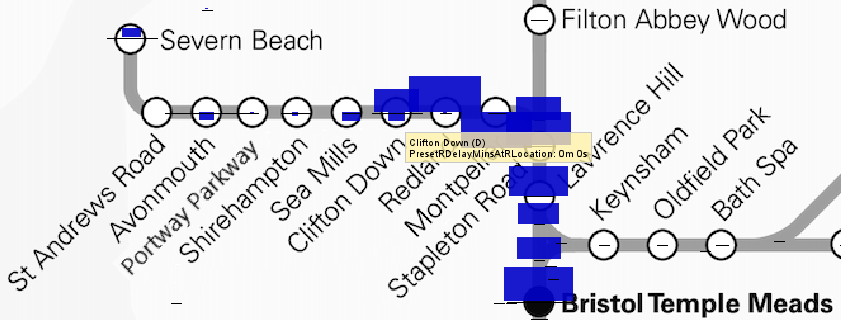Strategic decision-making support to reduce the impact of delays


Relevant RTS critical priority(ies):
Data driven; Optimised train operations
With more frequent timetable changes introduced since the Covid-19 pandemic, the rail industry is facing new operational and reliability challenges. SaviRPM is a new tool that can be used to support strategic decision making, with the aim of reducing the knock-on effects that delays can cause on the rail network.
A team led by Risk Solutions, and including Greater Anglia, Great Western Railway, Network Rail, Steer, Tracsis, City University, Heriot-Watt University and the University of Southampton, has built a demonstrator with interactive visualisations that can be used to understand the root causes of delays, identify performance improvement opportunities, and assess the effectiveness of potential interventions.
SaviRPM was set up and calibrated to test a range of scenarios on different parts of the network, including case studies with Greater Anglia, Great Western Railway and Network Rail.
Greater Anglia used SaviRPM to understand the relationship between spare capacity in the timetable and subthreshold delay. The work revealed the complex nature of interdependencies and interactions within the system that can be difficult to predict and highlighted the importance of collaboration between industry partners to find solutions to shared problems.
Great Western Railway used SaviRPM to investigate whether removing persistently disruptive services from a particular service group could improve performance. It showed that while removing these services could reduce reactionary delay minutes by 42%, it resulted in only a small improvement to on-time station stop performance. In another case study, looking at additional MetroWest services proposed as part of a new timetable, the model found results for the service group overall were excellent, but there were performance risks at particular locations such as Clifton Down.

Identifying causes of reactionary delays at Clifton Down
Network Rail used SaviRPM to compare two May 2022 timetable options for the East Coast Main Line from Kings Cross to Peterborough. It found that while they were both feasible, they performed slightly worse than the December 2019 baseline when stress tested with typical subthreshold and attributed delays. In addition, it was identified that a 4.5% increase in late station stops would affect all operators.

Overall, SaviRPM is a powerful tool for navigating complexity within the rail system and encouraging collaboration between operators and infrastructure managers. It provides an opportunity to enhance customer experience by improving the reliability of services and reducing the costs associated with delays. It could be particularly valuable to train operators as the industry seeks to ‘build back better’ and attract passengers back to the railway after the pandemic.
Operators interested in using the model can obtain a licence – along with support on set-up, calibration and scenario testing. For more information see Rail Performance Modelling for Strategic Decision Making (COF-DSP-05) (rssb.co.uk)
Back



